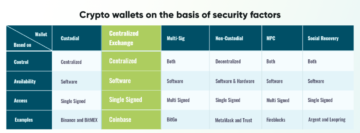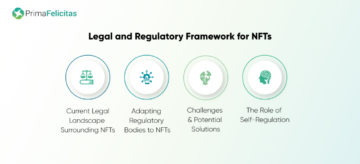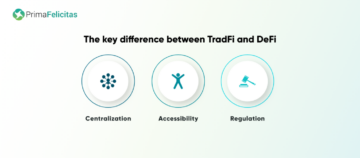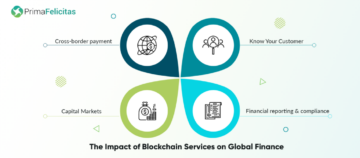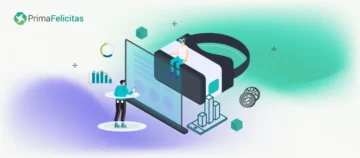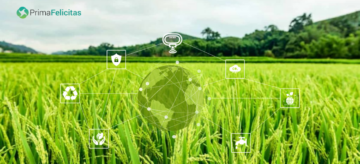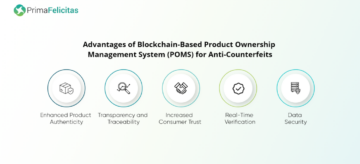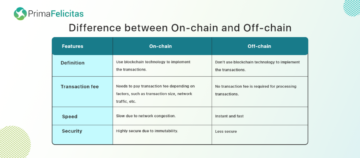dApp industry has been showing significant signs of growth in different sectors, such as DeFi, GameFi, and the NFT marketplace. Each sector has different and unique dApp components to achieve high reliability, security, and privacy. The following blog provides a brief about how these dApps are distinguishable from each other.
What is dApp?
Decentralized applications (dApps) are referred to as blockchain-based applications where smart contracts are deployed in the backend and user interface in the front. dApps are permissionless and trustless applications, which signifies that anyone is free to use dApps and anyone can verify the authenticity of these applications.
While decentralization is the key characteristic that differentiates dApps from traditional applications, the front-end code to create the web page remains the same. However, the back-end codes are distinct as dApps are mostly developed on the Ethereum platform. Ethereum is the decentralized blockchain platform that enables smart contracts to be deployed over the decentralized network.
Application of dApp in different industries:
There are several practical applications of dApp:
- Decentralized Finance (DeFi) – Decentralized Finance is a dApp that utilizes blockchain and cryptocurrency technology to manage financial transactions.
- NFT Marketplace – NFT marketplace is the type of dApp utilized to sell and buy Non-Fungible Tokens (NFT).
- GameFi – GameFi is the combination of the words ‘Game’ and ‘Finance’. It includes play-to-earn games that provide economic incentives to the players.
What is DeFi?
Decentralized Finance (DeFi) is referred to as the financial system that is built across the decentralized system and uses smart contracts. Smart contracts are automated enforceable agreement that doesn’t require an intermediary for execution. Any user with an internet connection can perform the transactions. dApps are developed for easy lending, trading, and borrowing of financial tools. For example, Uniswap is a DeFi application that allows users to trade cryptocurrencies.
What is NFT Marketplace?
The NFT marketplace is referred to as a platform where the Non-Fungible Tokens are stored, traded, displayed, and minted. The NFT marketplace is similar to traditional eCommerce websites, such as Amazon and eBay, where NFTs are traded instead of goods. According to NFT 2023 statistics, the NFT market capitalization is nearly more than $11.3 billion. As NFTs are unique and distinct, the owner of the NFT is the only one that possesses the right and ownership of NFT in the entire world. These features made NFTs so popular that nowadays between 15,000 to 50,000 NFTs are exchanged every week. dApps incorporates the utilization of NFTs into the software. For example, NFT dApps such as Axie Infinity are valued at over $3 billion.
What is GameFi?


GameFi refers to the combination of gaming and decentralized finance. GameFi integrated blockchain applications in the gaming sector and monetized the process. It utilizes cryptocurrencies, blockchain technology, and non-fungible tokens (NFTs) to develop a virtual gaming environment. It financially rewards the players for investing their time and effort in the game. The in-game assets can also be transferred to the outer world to be traded on crypto exchanges or NFT marketplaces.
Components of the dApp in the DeFi industry:
- Stablecoins – It is a form of cryptocurrency whose value is pegged to another asset, such as an exchange-traded commodity, fiat money, or another cryptocurrency. The aim of stablecoins is to tackle price fluctuations in the highly volatile cryptocurrency market.
- Decentralized Exchanges – These are cryptocurrency exchanges that link buyers and sellers and enable users to make transactions via a peer-to-peer network. They allow the user to exchange distinct cryptocurrencies.
- Open Ledger Protocols – These refer to the working of the DeFi exchange platform, such as a real-life banking system, enabling the deposited assets to be utilized for lending and borrowing.
- Derivatives – The contracts whose values are derived from the performance of an underlying financial asset. These assets include stocks, commodities, bonds, currencies, etc.
- Lending/Borrowing – With DeFi, users can borrow or deposit money through a decentralized application. These transactions utilize smart contracts to execute the loan by eliminating the middlemen.
- Decentralized Insurance Platforms – Decentralized insurance guarantees compensation in exchange for payment of the premium. In the DeFi industry, insurance is usually utilized to secure deposits and protect against smart contract failure.
Components of the dApp in the NFT marketplace industry:
- Blockchain Technology Integration – In dApps, blockchain networks are utilized to store information related to NFTs and transactions occurring on the platform. There are various kinds of blockchains to develop a fully-functioning NFT marketplace.
- Minting – It is a computer process that validates data, develops a new block, and records it into the blockchain. The platforms either allow NFTs with upfront gas costs or have lazy minting to eliminate any gas.
- Token Types – The NFT marketplace dApps support different NFT tokens. For example, Opensea supports a large number of NFTs, such as ERC-721 and ERC-1155.
- Effective Listing – The product page is effective while listing digital assets with high information, such as item descriptions, details, etc.
- Analytics – Majorly, all NFT marketplace dApps provide a bidding system for digital assets.
- Catalog With Digital Assets – The collection of products needs systematic compilation to ease the tracking of assets.
Components of dApp in the GameFi industry:
- Play-To-Earn Model (P2E) – P2E is a business model utilized in GameFi dApps that allows players to earn rewards with real-world value by completing tasks and playing games. Mostly, games have native tokes for in-game purchases and trading among players.
- Digital Asset Ownership – In GameFi, the players can own digital assets as they are recorded on the blockchain. Further, the players can even transfer ownership of digital assets to someone else via secondary marketplace or exchanges.
- DeFi Application – DeFi is an important component of GameFi dApps as it allows players to stake, lend, and earn money using the in-game assets.
- Game Aggregator – The game aggregator is designed for gamers that help in gathering detailed information for all the NFT assets.
- Non-Fungible Tokens (NFT) – NFTs are utilized in P2E games to represent assets. In GameFi, the NFTs can be traded for other cryptocurrencies, NFTs, and fiat money in-game.
- Native Tokens – GameFi has native tokens, such as utility and governance tokens. The utility tokens help users to trade digital assets from their in-game characters. Governance tokens enable users to vote on activities being performed on the gaming platform.
Conclusion:
The dApp industry is growing and expanding into several business sectors. Developers and programmers are dedicated to bringing positive changes into the present tech world using Web3 innovations. They have developed many use cases, such as online gaming, finance, trading exchanges, and many more to come.
Looking for help here?
Connect with Our Expert for a detailed discussion
Post Views: 2
- SEO Powered Content & PR Distribution. Get Amplified Today.
- PlatoAiStream. Web3 Data Intelligence. Knowledge Amplified. Access Here.
- Minting the Future w Adryenn Ashley. Access Here.
- Buy and Sell Shares in PRE-IPO Companies with PREIPO®. Access Here.
- Source: https://www.primafelicitas.com/Insights/key-components-of-dapp-nft-marketplace-defi-and-gamefi/?utm_source=rss&utm_medium=rss&utm_campaign=key-components-of-dapp-nft-marketplace-defi-and-gamefi
- :has
- :is
- :where
- $3
- 000
- 15%
- 2023
- 50
- a
- About
- Achieve
- across
- activities
- against
- Aggregator
- Agreement
- aim
- All
- allow
- allows
- also
- Amazon
- among
- an
- and
- Another
- any
- anyone
- Application
- applications
- Applications (DApps)
- ARE
- AS
- asset
- Assets
- At
- authenticity
- Automated
- Axie
- Axie Infinity
- Back-end
- Banking
- banking system
- BE
- been
- being
- between
- Billion
- Block
- blockchain
- blockchain applications
- Blockchain networks
- blockchain platform
- blockchain technology
- blockchains
- Blog
- Bonds
- borrow
- Borrowing
- Bringing
- built
- business
- business model
- buy
- buyers
- by
- CAN
- capitalization
- cases
- Changes
- characteristic
- characters
- code
- Codes
- collection
- combination
- come
- Commodities
- commodity
- Compensation
- completing
- component
- components
- computer
- connection
- contract
- contracts
- Costs
- create
- crypto
- Crypto Exchanges
- cryptocurrencies
- cryptocurrency
- Cryptocurrency Exchanges
- cryptocurrency market
- cryptocurrency technology
- currencies
- dapp
- DApps
- data
- Decentralization
- decentralized
- Decentralized Finance
- decentralized insurance
- decentralized network
- dedicated
- DeFi
- deployed
- deposit
- deposited
- deposits
- Derived
- designed
- detailed
- details
- develop
- developed
- developers
- develops
- different
- digital
- Digital Assets
- distinct
- Doesn’t
- each
- earn
- ease
- easy
- eBay
- ecommerce
- Economic
- Effective
- effort
- either
- eliminate
- eliminating
- enable
- enables
- enabling
- enforceable
- Entire
- Environment
- ERC-721
- etc
- ethereum
- Even
- Every
- example
- exchange
- exchange-traded
- Exchanges
- execute
- execution
- expanding
- expert
- Failure
- Features
- Fiat
- Fiat Money
- finance
- financial
- financially
- fluctuations
- following
- For
- form
- Free
- from
- front
- further
- game
- Gamefi
- Gamers
- Games
- gaming
- gaming platform
- GAS
- gathering
- goods
- governance
- Growing
- Growth
- guarantees
- Have
- help
- here
- High
- highly
- How
- However
- HTTPS
- important
- in
- in-game
- Incentives
- include
- includes
- incorporates
- industries
- industry
- Infinity
- information
- innovations
- instead
- insurance
- integrated
- integration
- Interface
- intermediary
- Internet
- internet connection
- into
- investing
- IT
- Key
- large
- Ledger
- LEND
- lending
- LINK
- listing
- loan
- made
- make
- manage
- many
- Market
- Market Capitalization
- marketplace
- marketplaces
- max-width
- middlemen
- minting
- model
- money
- more
- mostly
- native
- Navigation
- nearly
- needs
- network
- networks
- New
- NFT
- NFT Assets
- nft market
- nft marketplace
- NFT Marketplaces
- nft tokens
- NFTs
- non-fungible
- non-fungible tokens
- Non-Fungible Tokens (NFT)
- NON-FUNGIBLE TOKENS (NFTS)
- number
- of
- on
- ONE
- online
- online gaming
- only
- OpenSea
- or
- Other
- our
- over
- own
- owner
- ownership
- P2E
- page
- payment
- peer to peer
- perform
- performance
- permissionless
- platform
- Platforms
- plato
- Plato Data Intelligence
- PlatoData
- play to earn
- players
- playing
- Popular
- positive
- Posts
- Practical
- Practical Applications
- Premium
- present
- price
- Price Fluctuations
- PrimaFelicitas
- privacy
- process
- Product
- Products
- Programmers
- protect
- provide
- provides
- purchases
- real world
- recorded
- records
- referred
- refers
- related
- reliability
- remains
- represent
- require
- Rewards
- right
- same
- secondary
- sector
- Sectors
- secure
- security
- sell
- Sellers
- several
- significant
- signifies
- Signs
- similar
- smart
- smart contract
- Smart Contracts
- So
- Software
- Someone
- Stablecoins
- stake
- statistics
- Stocks
- store
- stored
- such
- support
- Supports
- system
- tasks
- tech
- Technology
- than
- that
- The
- their
- There.
- These
- they
- Through
- time
- to
- Tokens
- tools
- Tracking
- trade
- Trade Cryptocurrencies
- traded
- Trading
- traditional
- Transactions
- transfer
- transferred
- trustless
- type
- types
- underlying
- unique
- Uniswap
- use
- User
- User Interface
- users
- using
- usually
- utility
- utilize
- utilized
- utilizes
- value
- valued
- Values
- various
- verify
- via
- views
- Virtual
- virtual gaming
- volatile
- Vote
- web
- Web3
- web3 innovations
- websites
- week
- which
- while
- with
- words
- working
- world
- zephyrnet

